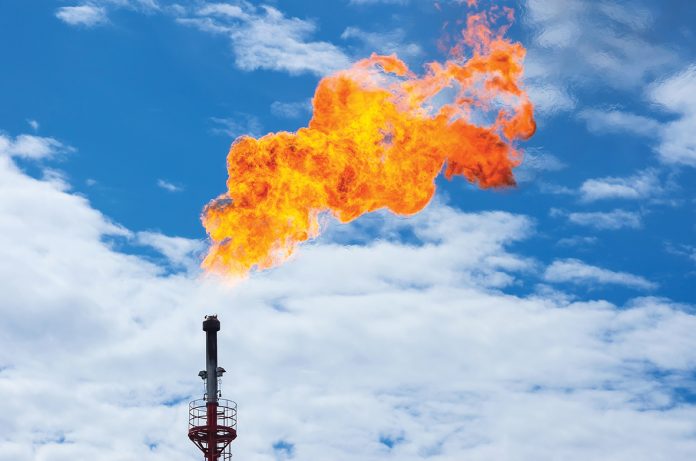
Attention Grows Over Methane Leaks, Venting, and Flaring
Attention over methane leaks, venting and flaring has undoubtedly increased in recent weeks as a number of actions have taken place at the federal and state levels that have significant longer-term implications.
Texas and New Mexico Take Steps to Regulate Methane Emissions
In August, the Texas Railroad Commission (RRC) took steps moving it closer to reducing flaring and improving the reporting requirements for any releases by approving for public comment proposed changes to the Application for Exception to Statewide Rule 32. Specifically, the rule changes would:
- Reduce the amount of time an operator can obtain an administrative exception to the flaring rule.
- Provide incentives for the deployment of technologies that reduce gas flaring.
- Require operators to provide more information outlining how their specific situation justifies a need to flare.
- Tag flares to the specific production property where they take place.
Texas Railroad Commission Reduces Flaring and Enhances Reporting Requirements
The RRC noted that between June 2019 and May 2020, the amount of produced gas that was flared in Texas was reduced by 79% while, at the same time, gas production rose 13%. Flaring from casinghead gas, which is produced from oil wells, decreased by 82%.
“The sharp decline in the flaring rate suggests that decreased flaring volume was caused by more than simply a decrease in production,” said Paul Dubois, RRC Assistant Director for Technical Planning. “We will continue analyzing the monthly data that comes in. That information, along with the Statewide Rule 32 applications, will help us continue a comprehensive approach to regulating flaring.”
Reportedly, commissioners are also considering using a matrix developed by the Texas Methane and Flaring Coalition as a tool to reduce the number of days an operator can continue to flare in the absence of Commission approval following a hearing.
The RRC action followed the June release of a report that found operators in the Permian Basin burned a record $750 million worth of natural gas in 2018. The Institute for Energy Economics and Financial Analysis report calculated 238.1 billion cubic feet of gas was either flared or vented, roughly double the value amount wasted in 2017.
New Mexico Draft Rules Target Methane Venting and Flaring
Elsewhere in the states, New Mexico regulators in late July released two draft rules aimed at reducing methane venting and flaring. The draft rule issued by the New Mexico Energy, Minerals and Natural Resources Department requires oil and gas operators to achieve a 98% gas capture rate by the end of 2026.
According to Sarah Cotrell Propst, Energy, Minerals and Natural Resources Department Secretary, the rule incorporates the “best ideas” from methane rules in other states such as Texas, North Dakota and Colorado. The agency estimates that the rule will reduce volatile organic compounds by 77,000 tones and oxides of nitrogen (NOx) by 21,000 tons. Environmental groups have lauded the draft rules, stating that they are more forceful than rules in other states. Other groups have expressed concerns about the rules’ treatment of marginal wells, which will not be required to meet yearly gas capture targets but will receive credit for monitoring and mitigating leaks. They argue that the cumulative effects of marginal wells emissions amount to unacceptable levels.
“NMOGA and our members are committed to reducing methane emissions while providing a sustainable source of energy,” said Ryan Flynn, Executive Director, New Mexico Oil and Gas Association. “As the state’s rulemakings move ahead, we will continue to collaborate with both agencies by sharing our technical and scientific expertise. These rules should build upon the innovative solutions that make New Mexico and the United States the global leader in safe and environmentally responsible energy production. New Mexico relies heavily upon the oil and gas industry for our state budget and funding for public schools, and it is critical that these rules allow our industry to continue to create jobs and revenue amid unprecedented economic challenges.”
The issue of methane leaks has also been highlighted in recent weeks following an Environmental Defense Fund (EDF) study released in April that suggests Permian Basin producers are releasing methane at three times the national average, according to Environmental Protection Agency nationwide statistics. The study claimed Permian producers to have a 3.5% loss rate, a rate that is 15% higher than the reduction targets set by industry leaders.
EDF called on the industry to address the situation. In the meantime, they are embarking on a data collection campaign using tower-based monitors, ground-based mobile sensors, fixed-wing aircraft and helicopters. The data collected will be periodically shared over time and will eventually be matched with actual producers.
Federal Action
At the federal level, the U.S. Environmental Protection Agency (EPA) finalized its rescinded regulations for methane emissions for the oil and gas industry, releasing two final rules in August that repeal the earlier OOOOa rules regulating emissions from oil and gas industry production, processing, transmission and storage. The EPA justified its move by stating that the Obama administration did not define what constitutes a “significant” contributor to climate change under the Clean Air Act when it offered its rules. The EPA also said that the standards were redundant to other regulations that regulate volatile organic compounds.
The industry has been divided over the methane rule, which has been a major source of contention. Smaller producers have opposed the rule, arguing that it is an expensive way to reduce very little greenhouse gas emissions. Many larger producers have supported the rule as a way to create finality and certainty over the issue and reduce industry’s overall vulnerability to methane emissions’ impacts on climate change.
EPA’s latest action will undoubtedly end up back in the courts, where the issue has been litigated for years. As the issue of climate change heats up as an election-year issue, there will be increased attention focused on methane emissions from oil and gas activities, and the Permian Basin will be the location where much of that attention is focused.
While the courts and the outcome of the 2020 presidential and congressional elections will ultimately decide the role the federal government plays in regulating methane emissions, state regulatory bodies in oil-producing states, working with industry, will be the driving force on how methane emissions and flaring are ultimately addressed.
About the author: Jack Belcher joins Cornerstone in 2019 with over 25 years of experience in energy and energy policy. As senior vice president of Cornerstone Energy Solutions, he provides strategic and tactical advice to energy and transportation companies and financial institutions, focusing on government relations, regulatory affairs, public policy, strategic communications, situational risk management, and Environmental, Social, and Governance (ESG) performance. Jack also serves as managing director of the National Ocean Policy Coalition
About the author: Brent Greenfield serves as Vice President and Counsel at Cornerstone Energy Solutions. He provides clients with strategic policy and management guidance, research, analysis and communications support across the upstream, midstream, and downstream segments of the energy industry. In addition, Brent serves as executive director of the National Ocean Policy Coalition, an organization comprised of members representing sectors including energy, fishing, waterborne transportation, construction, agriculture, and critical infrastructure.














